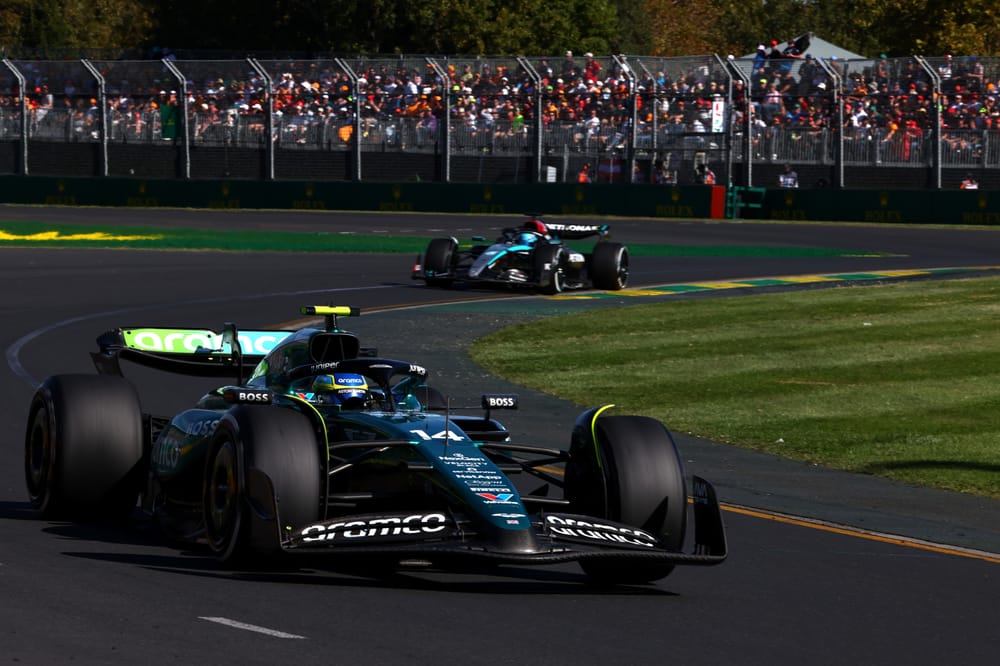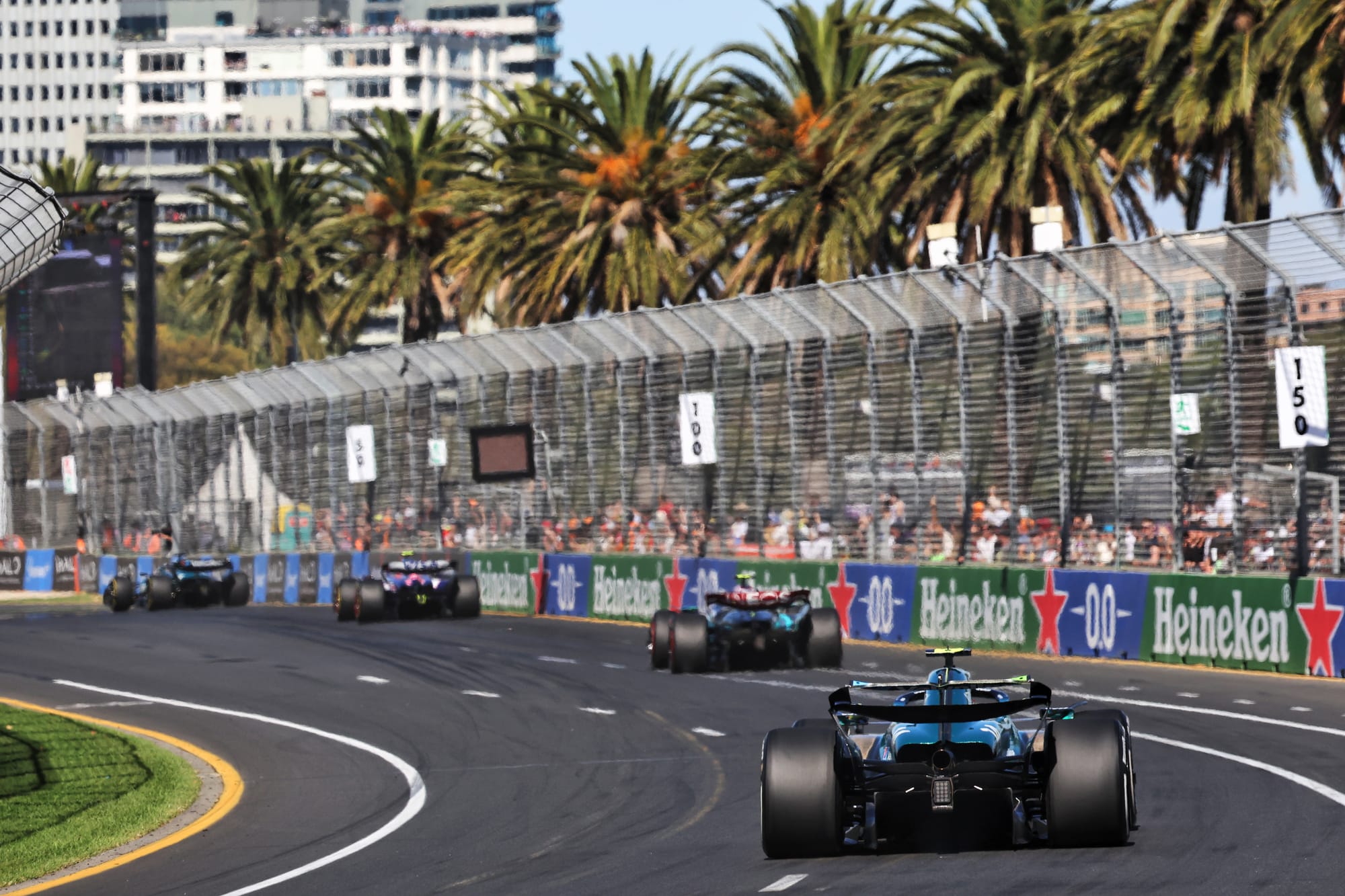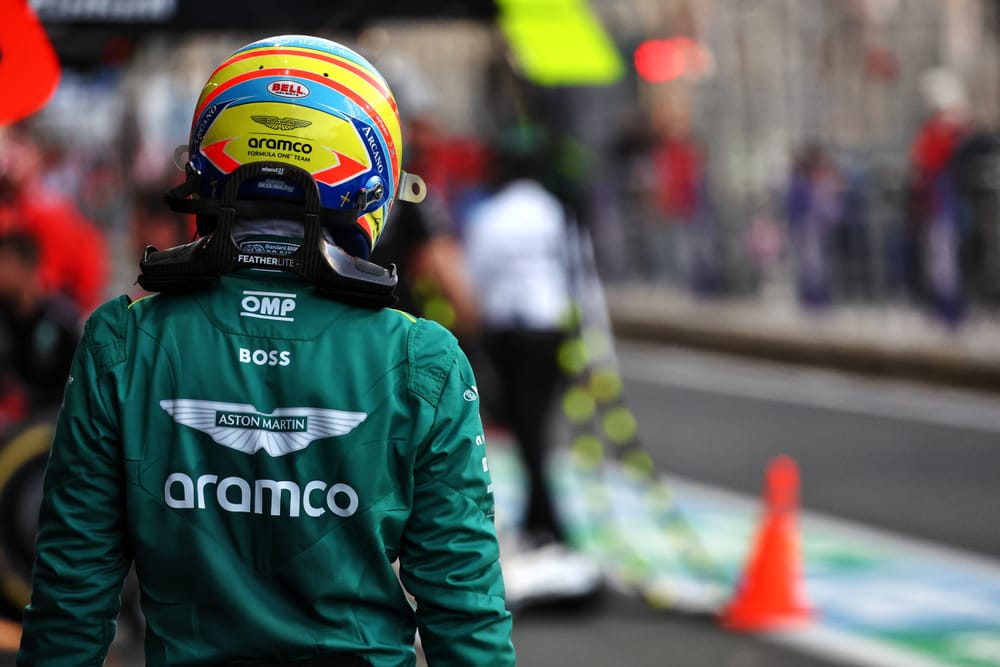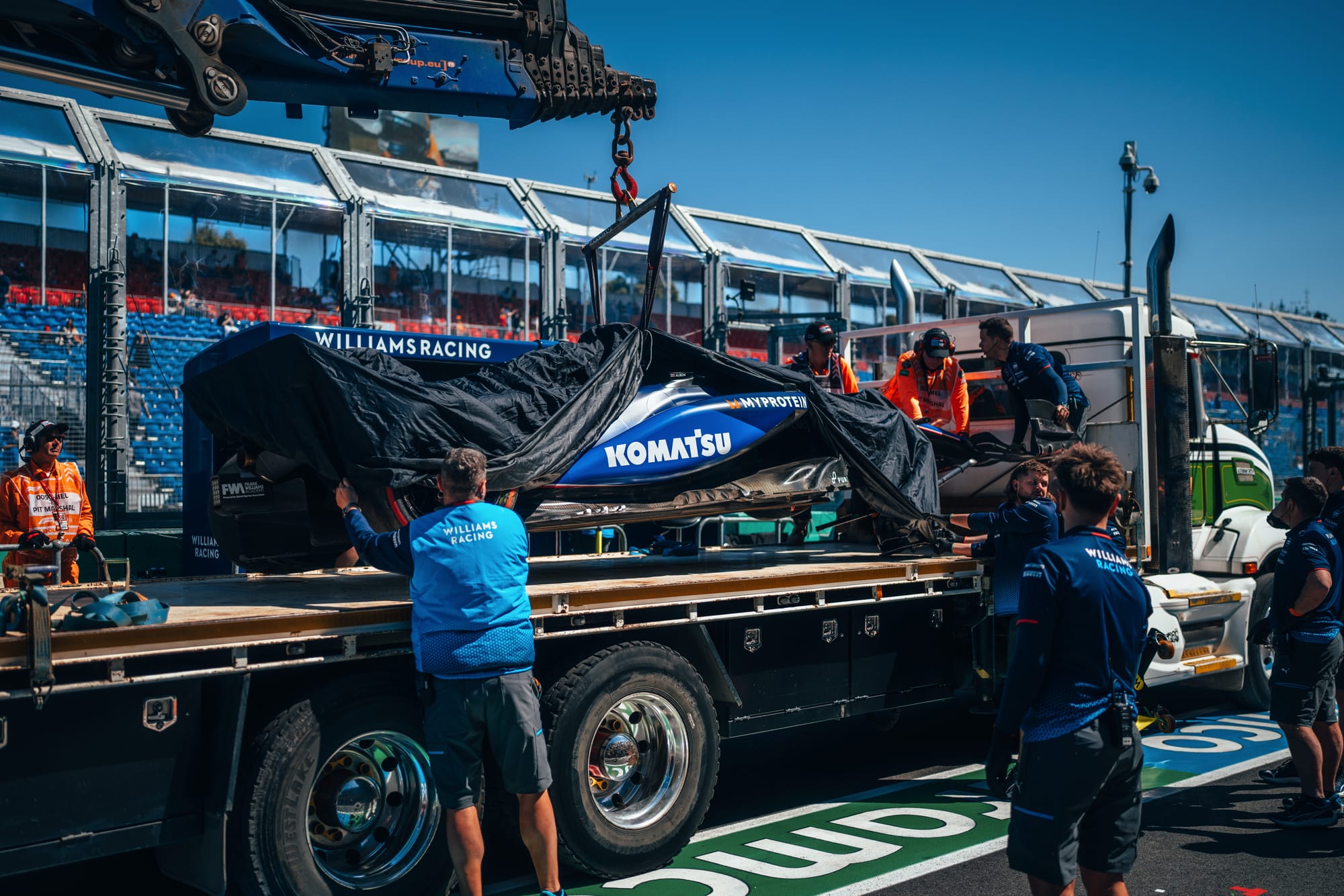Up Next

Fernando Alonso’s 20-second penalty for driving in a “potentially dangerous” manner in the Australian Grand Prix was a big talking point in the Suzuka paddock on Thursday ahead of the Japanese GP, with opinion on whether it was justified split among rivals.
While the majority felt the penalty was, as Valtteri Bottas put it, “a bit harsh”, or in the words of Alonso’s Aston Martin team-mate Lance Stroll, “ridiculous”, there were several with strong contrary opinions. Charles Leclerc was among them, arguing that “what Fernando did in Australia was too much”.
Inevitably, George Russell - on the receiving end of Alonso's actions - was in the latter camp. He took a strong, but measured, position on the penalty being justified while being at pains to stress that “it’s nothing personal”. He even joked about running into Alonso in a coffee shop between races, offering a light-hearted complaint about Alonso not paying for his drink. But he was also resolute in making the case that the penalty was deserved.
“It was obviously a bit of a strange situation,” said Russell. “[I was] totally caught by surprise. I was looking at the steering wheel making a switch change in the straight, and when I looked up, I was in Fernando's gearbox and it was too late. Then the next thing I know, I'm in the wall.
“If it were not to have been penalised, it would have really opened a can of worms for the rest of the season and in junior categories of saying, ‘You're allowed to brake in a straight, are you allowed to slow down, change gear, accelerate, do something semi-erratic?’
“I don't take anything personally with what happened with Fernando and it probably had bigger consequences than it should have. But if it went unpenalised, can you [therefore] just brake in the middle of a straight? I don't know.”
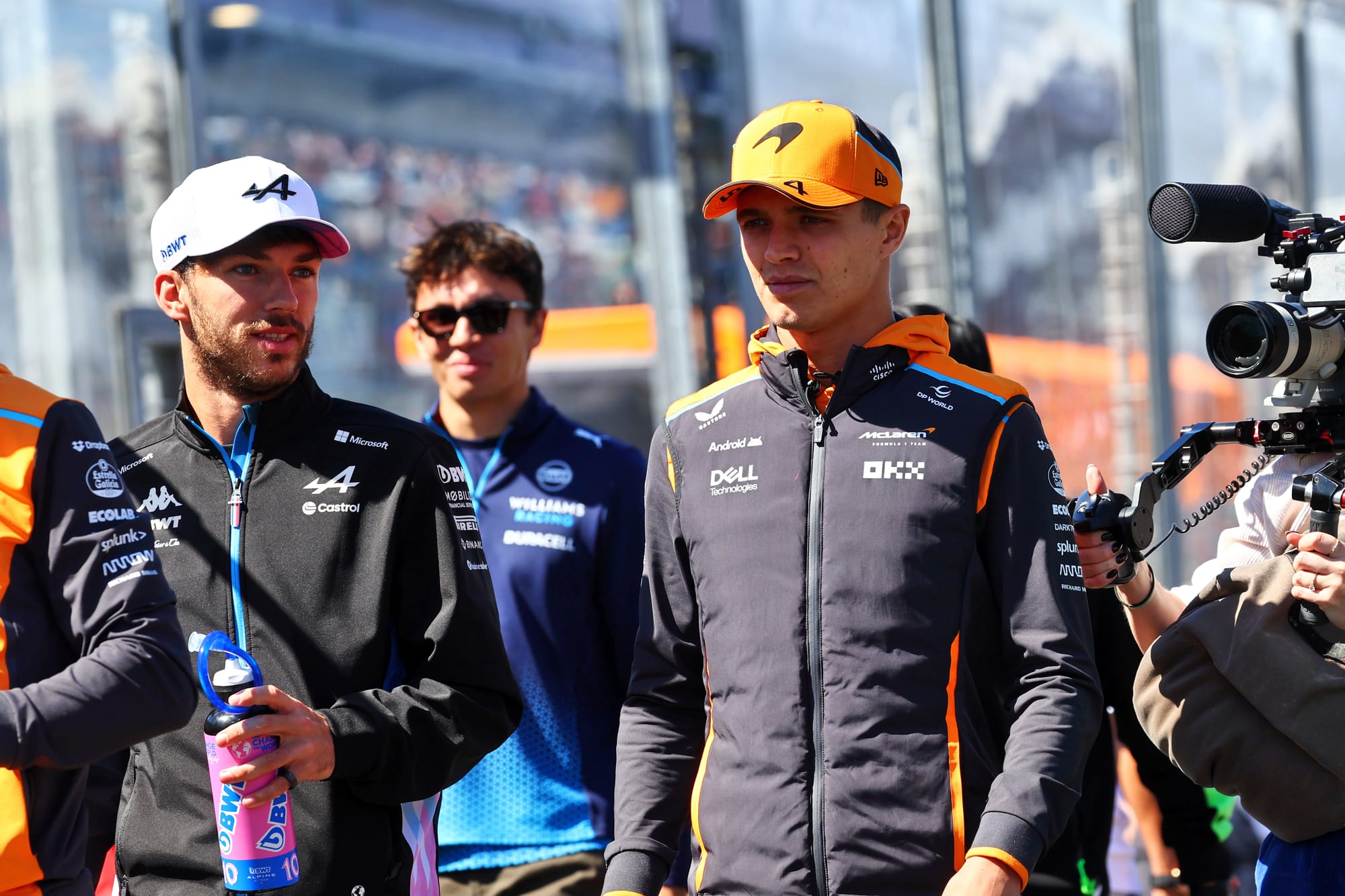
McLaren driver Lando Norris was among the critics of the penalty. He accepted Alonso’s driving approaching Turn 6 - in which the Aston Martin driver, according to the stewards report, “lifted slightly more than 100m earlier than he had going into that corner before the race”, braked early, downshifted early, then upshifted again and accelerated to the corner before lifting again to take the turn - was erratic, but argued Russell had time to react.
“What Fernando did was odd, like extreme, but I don’t think it’s even close to being regarded as a brake test,” said Norris. “Did he brake and downshift? I don’t know the exact timings of it. But should it be a penalty in any way? No. George, in my opinion, should have seen it coming.
“It’s always tougher being in the situation so that’s why I don’t like commenting on it. But that kind of thing shouldn’t have been a penalty. It’s clear, he’s in front. Max and Hamilton [in Saudi Arabia 2021], that’s a brake test. This was not a brake test. This was trying to play very smart - Fernando being Fernando and [Russell] being caught out by it.
“It was not aggressive, it was not one metre in front of a car and stopping. It was 100 metres ahead and slow down and the approaching speed caught George off. But nowhere near a penalty.”
Norris's McLaren team-mate Oscar Piastri questioned the logical of “giving someone a penalty for causing dirty air” and admitted to being “a bit surprised by the penalty”. Stroll took a similar position, defending his team-mate and questioning giving a penalty when there is no contact.
“I don’t think he did anything stupid,” said Stroll of Alonso. “He was just preparing the exit of the corner and it was ridiculous to get a drivethrough penalty for an incident that doesn’t even involve any contact between the cars or anything like that. I didn’t really understand it.”
However, Haas driver Nico Hulkenberg criticised Alonso’s driving. While he accepts the principle that drivers defending can and do change their approach to corners, he felt Turn 6 in Melbourne was not the right place to take the approach Alonso did.
“I wasn't very impressed with Fernando's tactics there,” said Hulkenberg. “Melbourne is kind of a street circuit, it's quite narrow there, we approach that corner with 260-270km/h [161-168mph], it’s a blind exit and if, for whatever reason, the flag system or someone is late and one of us would have T-boned George...
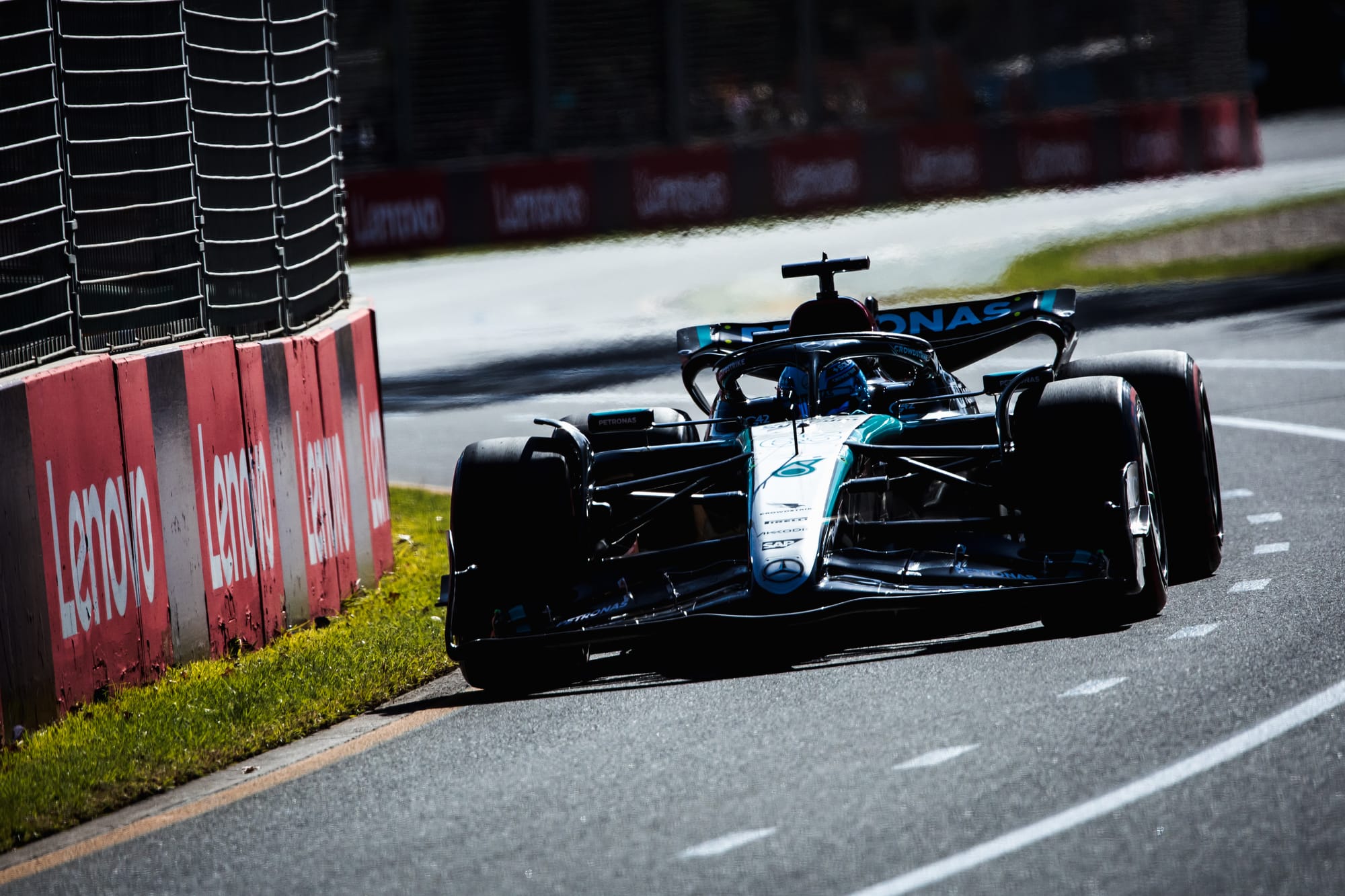
“So while that tactic is quite a common one in Formula 1, in that particular corner, with that speed, with a blind exit, I think it's the wrong corner to do it and produced quite a dangerous situation.”
Hulkenberg also questioned Alonso’s communication over the radio complaining of a throttle problem, which was not mentioned publicly again and that was also not referenced in the stewards’ decision. The inference we can draw from that is that Hulkenberg suspects it was subterfuge to cover up Alonso making a misjudgment and going too far in his defensive strategy.
“What I also don't understand is right after, on the radio, he's talking about throttle issues, throttle stuck, or not stuck,” said Hulkenberg. “But then later on, he doesn't talk about that anymore, he just talks about that is standard procedure and tactics. So that doesn't align and seems to have changed his opinion there. But basically, I wasn't very impressed with that, personally.”
Leclerc shared Hulkenberg’s view that Alonso overstepped the mark in this case. He also questioned whether the penalty was too mild given the 20-second addition, given in lieu of a drivethrough penalty, only cost Alonso two positions.
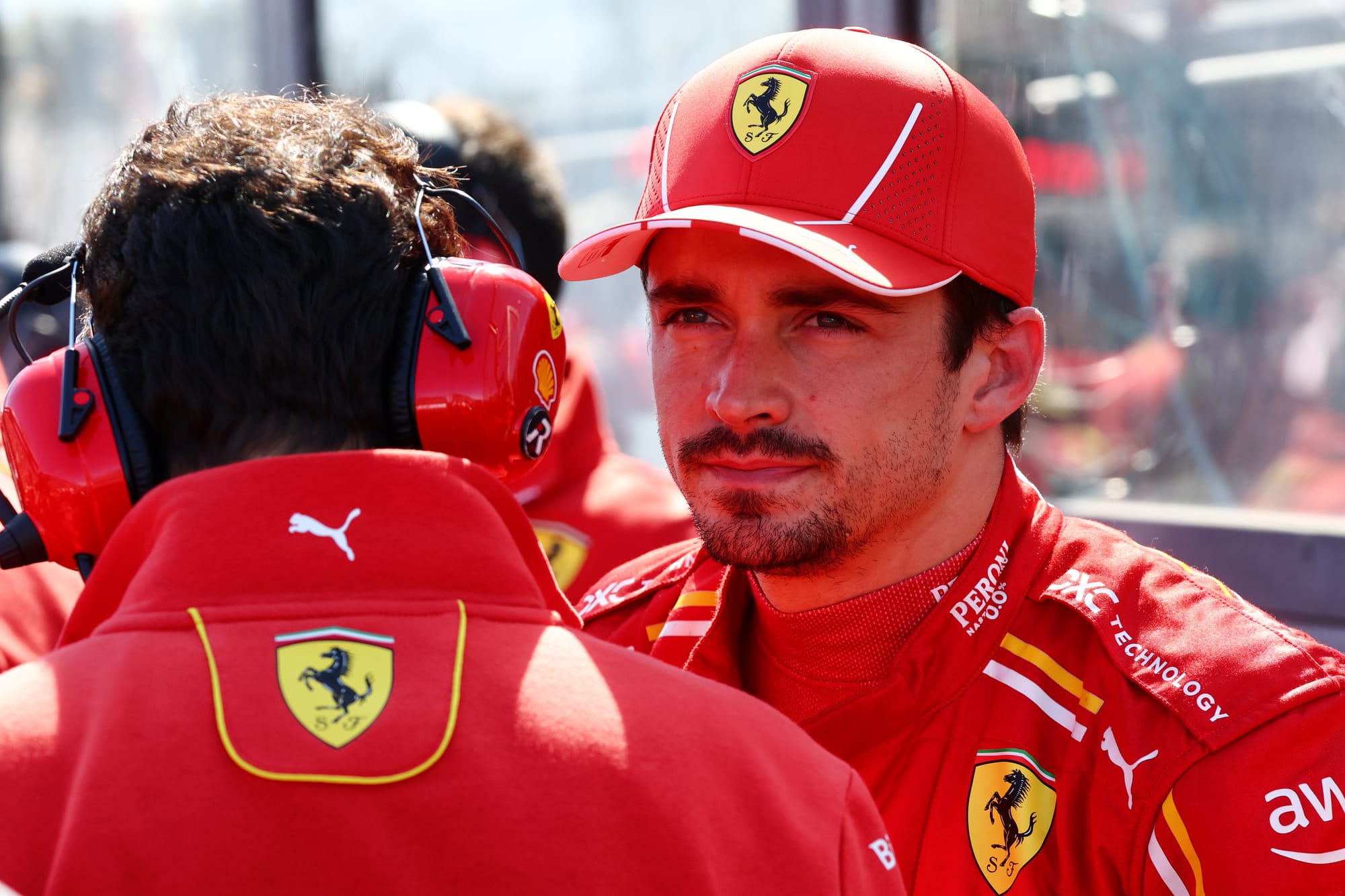
“It’s something that we do as drivers, however not to that extent,” said Leclerc. “What Fernando did in Australia was too much and had to be penalised.
“However, I believe that there is something that we need to look into in terms of the penalty. If you are in a position like Fernando was, you only lose two places. I've always thought that position penalties are more fair because whatever the race situation you are, you are penalised like you are intended to be penalised. However with time penalties, there can be inconsistencies depending on race situation.”
Such differences of opinion mean this will be a point of dispute among drivers. As Max Verstappen said in evading giving his opinion, “we’ll discuss it in the drivers’ briefing”.
ALONSO'S DEFENCE
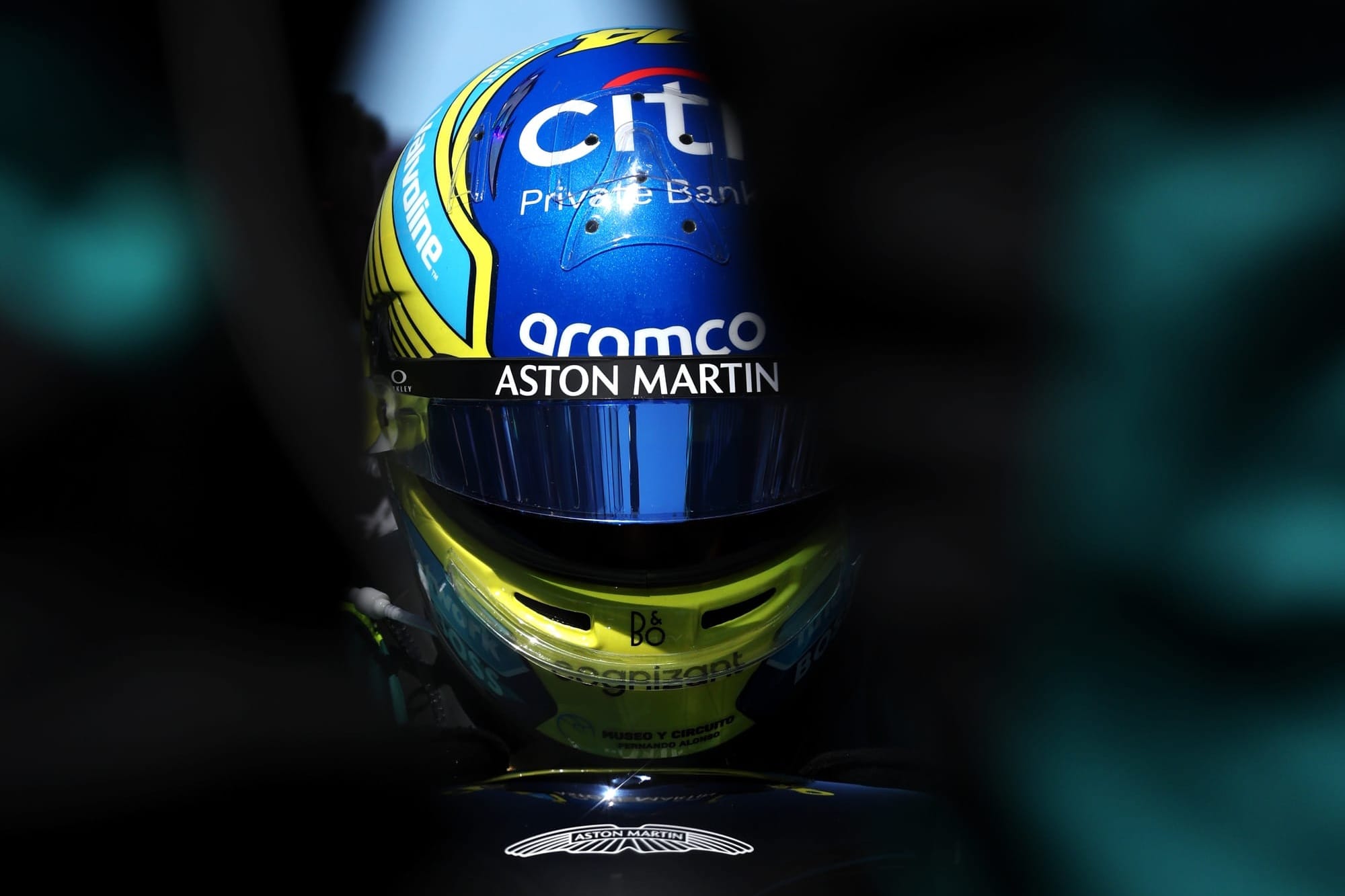
Alonso faced the media for the first time since the penalty, meaning he gave his most comprehensive public explanation of the incident. His demeanour when he faced the written media, including The Race’s Scott Mitchell-Malm, is best described as one of gentle, but assured defiance.
He also showed he wasn’t interested in submitting to an extensive interrogation on the subject, saying “I accept the questions but I think I’ve explained it already”. However, that might have been less because he felt uncomfortable discussing it and more that he was bored of the topic, having already faced many questions from television media a few minutes earlier.
The Aston Martin driver argued that the rules around racing are clear, and always were, suggesting that his penalty will likely stand as unique.
“It was clear and it’s still clear,” he said of the rules governing the defending of positions. “The penalty was a bit surprising in Melbourne but nothing we can do, we have to accept it and move on and concentrate on here.
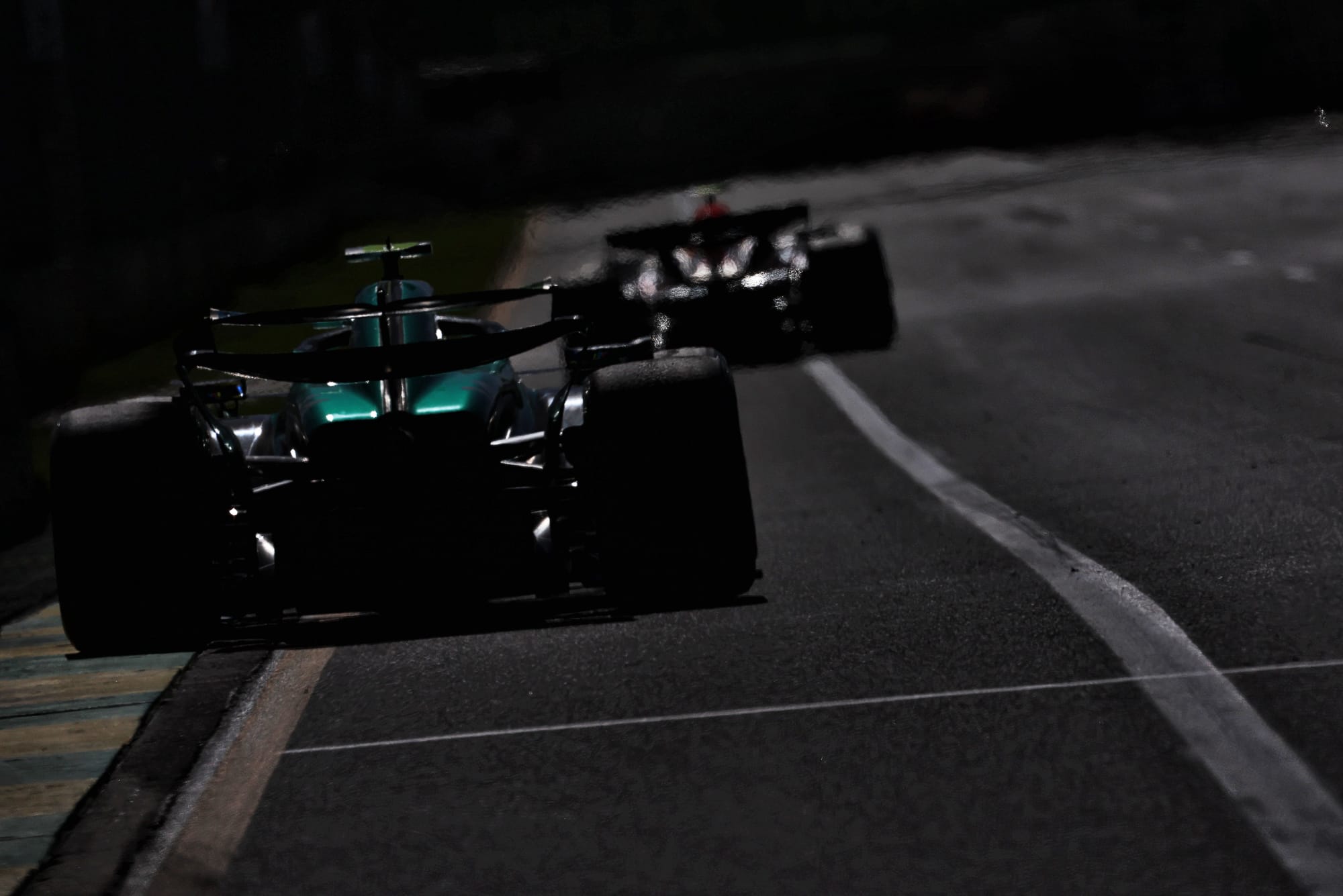
“There is no obligation to drive 57 laps in the same way. Sometimes we get a slower pace to save fuel, to save tyres, to save battery. Sometimes we get slow into corners or in some sectors of the track to give DRS to the car behind because that will be a useful tool if the second car behind is at a faster pace. All those things are completely normal and it was and it is and it will be forever in motorsport.
“We had a penalty, but I think it will probably be a one-off and it will never be applied ever again.”
Alonso also argued the penalty "100%" would not have been issued had Russell not crashed.
The FIA stewards' decision had stated that “the stewards have not considered the consequences of the crash” and that Alonso wasn’t blamed for the turbulence that contributed to Russell’s crash. This was framed as a question, with the decision document saying “should Alonso be responsible for dirty air, that ultimately caused the incident? - no”.
“If it was in Abu Dhabi with a run-off area on asphalt, George would rejoin the track a few metres after that and try to have a go at me on the following lap or following straight and it will not be any problem," Alonso claimed.
RACING RULES 'CAN OF WORMS'
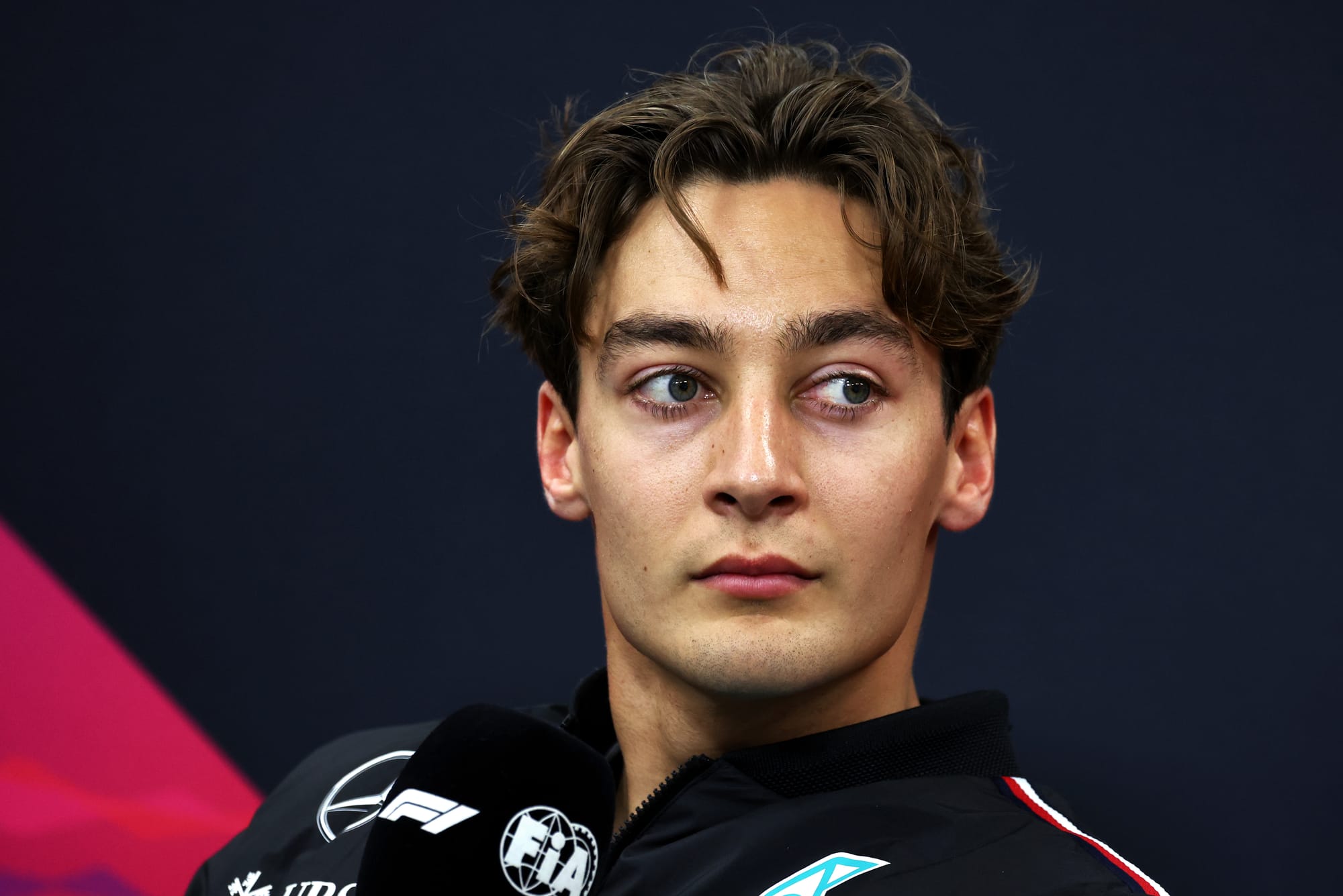
Russell warned that while he didn’t “think what Fernando did was extraordinarily dangerous, it will open a can of worms if it wasn’t penalised”.
That raises the question of what impact this will have on the racing in future. If you listen to the drivers who were against the penalty, they feel it threatens normal racing practice, but those who support it believe the precedent makes it possible to race safely by eliminating erratic and potentially dangerous defensive manoeuvres.
“Every driver is open to change their line, brake earlier, power through the corner, do whatever,” said Russell. “When we start braking in the middle of a straight, downshifting and accelerating, upshifting again then braking again for a corner, that goes beyond the realms of adjusting your line.
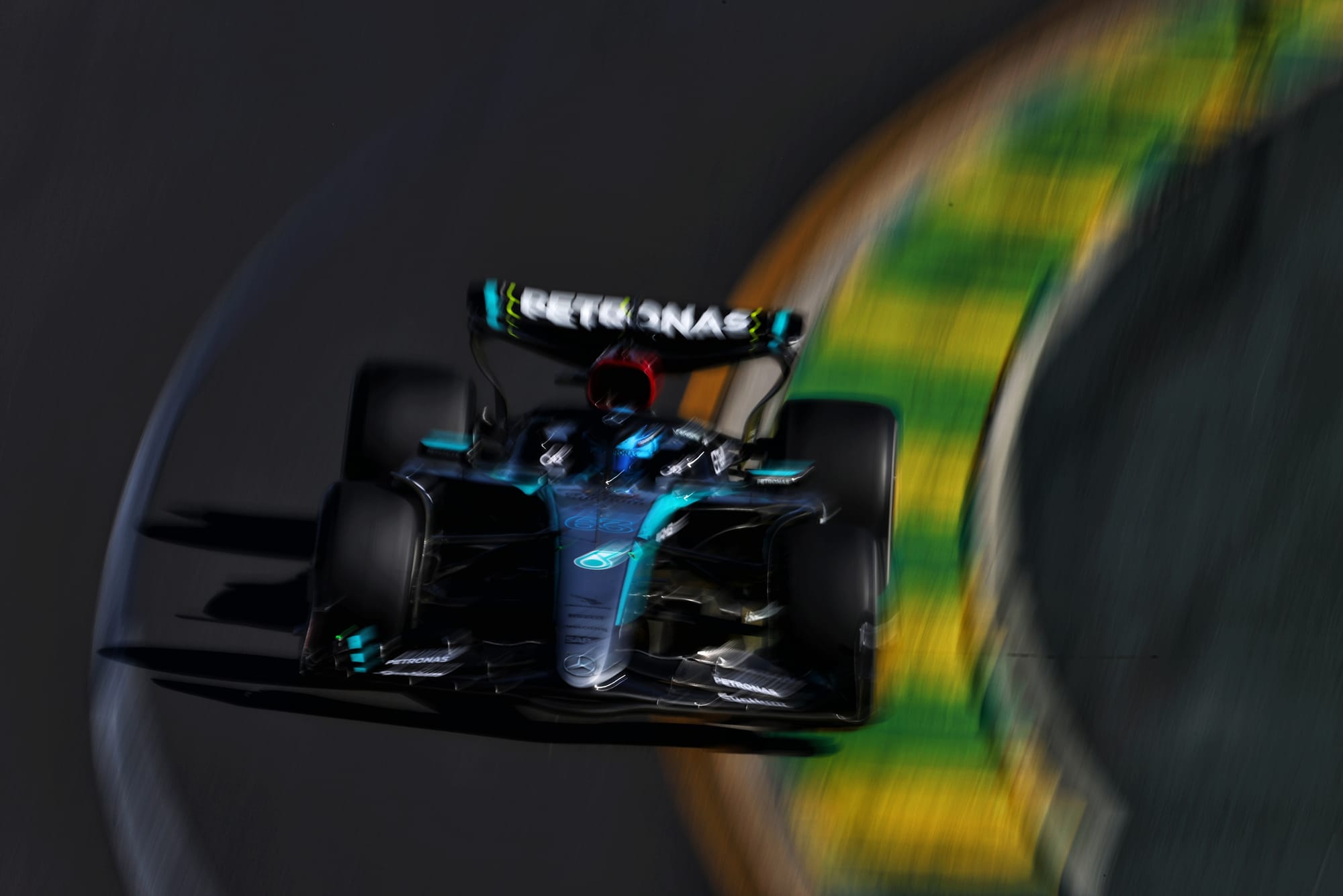
“I was looking at my steering wheel in that straight, as I've done every single lap prior, and when I looked up 100 metres before the corner, I realised I was right behind Fernando, rather than the half a second that I was. We've got so many duties to take care of when we're driving, going around the racetrack, changing all of the settings on the steering wheel, making sure you're in the right engine mode, taking care of the tyres, talking to your engineer, managing the deltas on your steering wheel when it's an in-lap, out-lap, safety car, whatever it may be.
“If you add into the mix [that] you're allowed to break in the middle of the straight to get a tactical advantage, that is maybe one step too far.”
Red Bull driver Sergio Perez was among those who felt Alonso overdid his defence. However, he argued it’s essential that such manoeuvres are now penalised consistently.
“My take is that it was definitely a bit too much over the limit, a bit unnecessary but my biggest fear is that we might see this incident again next weekend and nothing will happen,” said Perez. “We’ve been struggling a lot to keep the consistency in penalties.
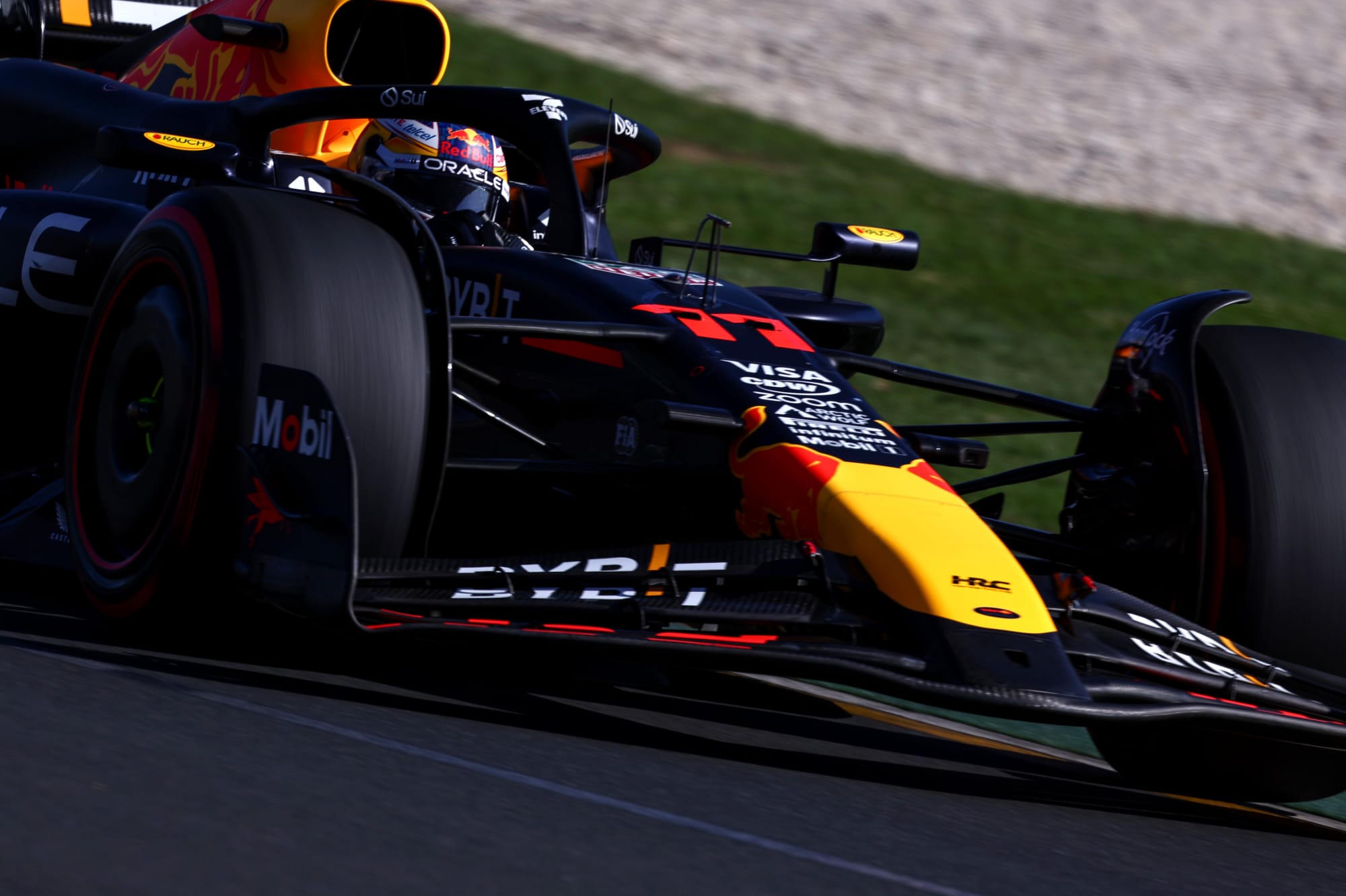
“For example, in Jeddah there was a block of Bottas in Q1 and no penalty. I blocked Hulkenberg [in qualifying in Australia], he lost half a tenth and I get three places. The biggest talking point should be consistency. If incidents like this are going to be penalised, then they have to be penalised every single weekend.”
Ultimately, the penalty is in keeping with the rules laid out in the FIA’s International Sporting Code that prohibits erratic driving - so the rules themselves already exist. However, the key is that it’s made clear to drivers exactly why Alonso was penalised in order to ensure there is absolute understanding.
It’s appeared from some drivers’ comments on both sides of the argument that while they may have viewed the onboard camera of the crash, they haven’t absorbed the precise reasoning laid out in the stewards’ verdict. The justification is likely to be discussed in the drivers’ briefing and should ensure that drivers understand what is and isn’t acceptable without the need to produce yet more written rules that often have unintended consequences.
Russell is right that a can of worms would be opened if stewards deemed it acceptable for a driver to reduce speed, downshift, get back on the throttle, then reduce speed again into a high-speed corner. The hope is this penalty means that, as Daniel Ricciardo said, “are any of us going to do it this weekend? I think the answer is no”.
CALLS FOR TRACK CHANGES
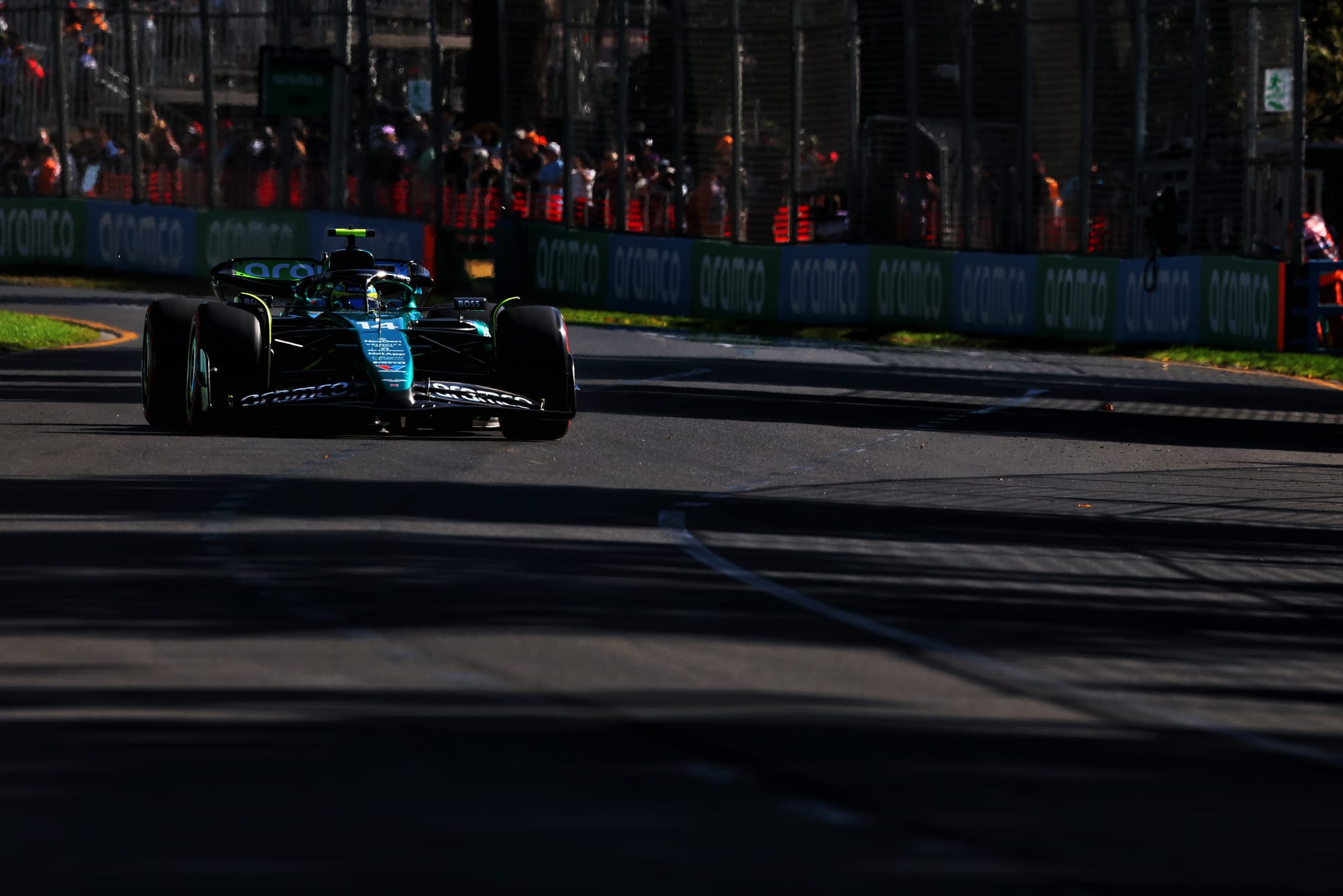
Tangential to the penalty, many drivers called for modifications in the Turn 6/7 combination where Russell crashed. This is on the basis that the angle of the barrier on the left-hand-side that Russell hit directs cars back onto the track.
While the barrier has always been oriented in that way since the Albert Park circuit first joined the world championship calendar in 1996, this part of the track has become significantly quicker. Turn 6 was widened by more than seven metres, which meant a significant increase in corner entry speed - as it’s now taken in sixth gear on a fast lap compared to fourth before the change.
Carlos Sainz was among the drivers to call for the configuration of the barriers to be reevaluated in this part of the track not just because of Russell’s accident, but also others such as Alex Albon’s last year (pictured below) and Dennis Hauger’s in the Formula 2 feature race two weeks ago, where his MP Motorsport-run machine hit the wall on the left side and came to rest on the racing line.
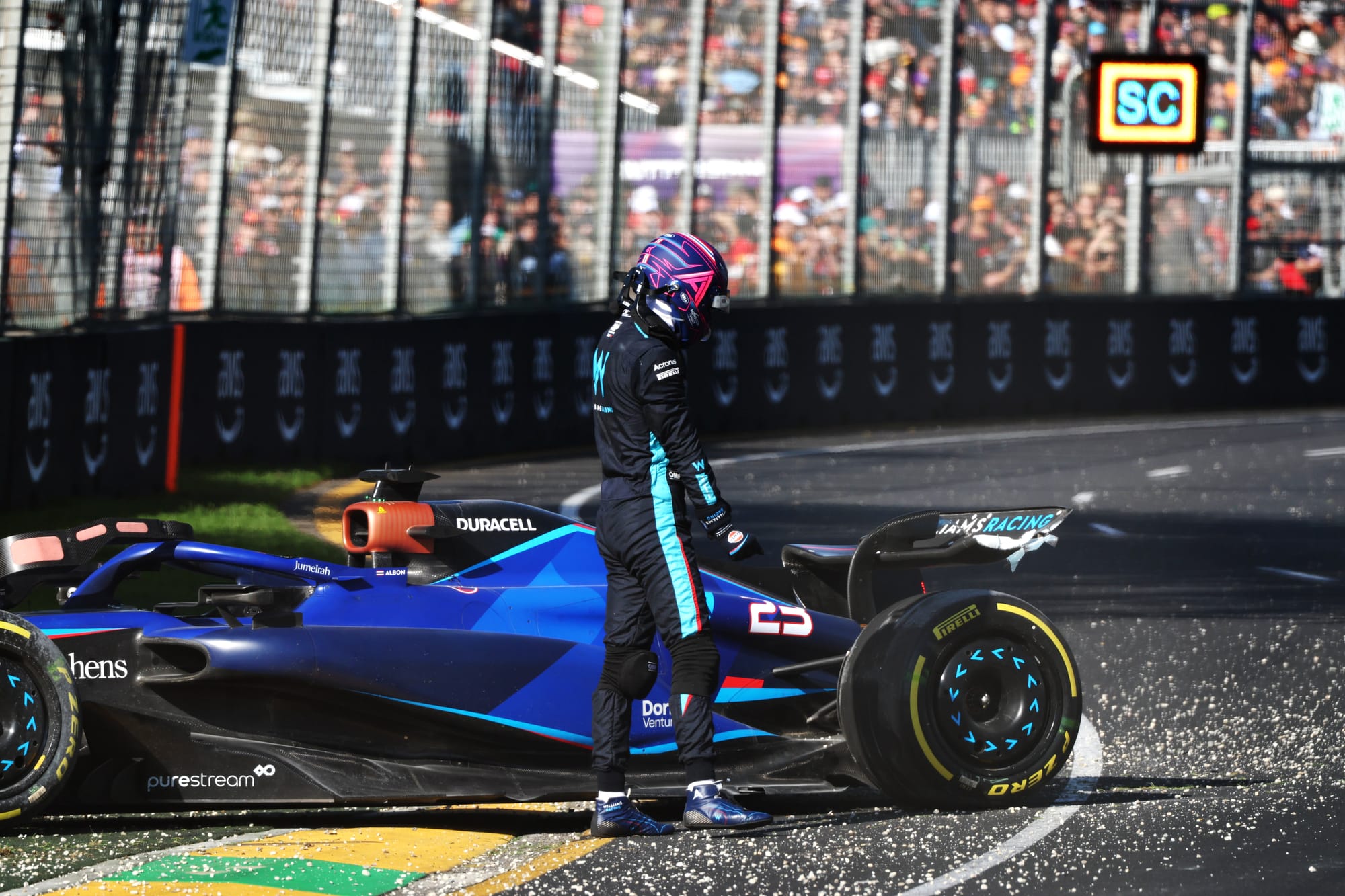
“That corner needs to be reviewed, which is already something I said in the last drivers' briefing,” said Sainz. “It is not the first time that after a collision the car comes back into the track. It's a corner where we're doing 250km/h [155mph] and it's blind and I just don't like the last few incidents that we've seen in this corner, also in other categories. It just doesn't give me a very good feeling.
“It's a great corner, don't get me wrong, I love driving it in a qualifying lap. It's just when it comes to racing, there's been just too many examples of a car coming back onto the track and being very narrow there.”
“The exit kerb and the way the wall is angled tends to force drivers back onto the racing line,” said Albon - who also crashed at Turn 6 this year, albeit in a different manner, having lost it on the kerb.
“That's one thing. It's not a new thing, it happened last year, and it was brought up but obviously it wasn't changed.
“And there's also the kerb. There’s kind of a double-stepped kerb on the exit and especially as we have these low cars now, we can use the first bit of kerb but if you go too far across and you hit the second kind-of ramp section, it forces the car into the air. There's two things that could be done better.”
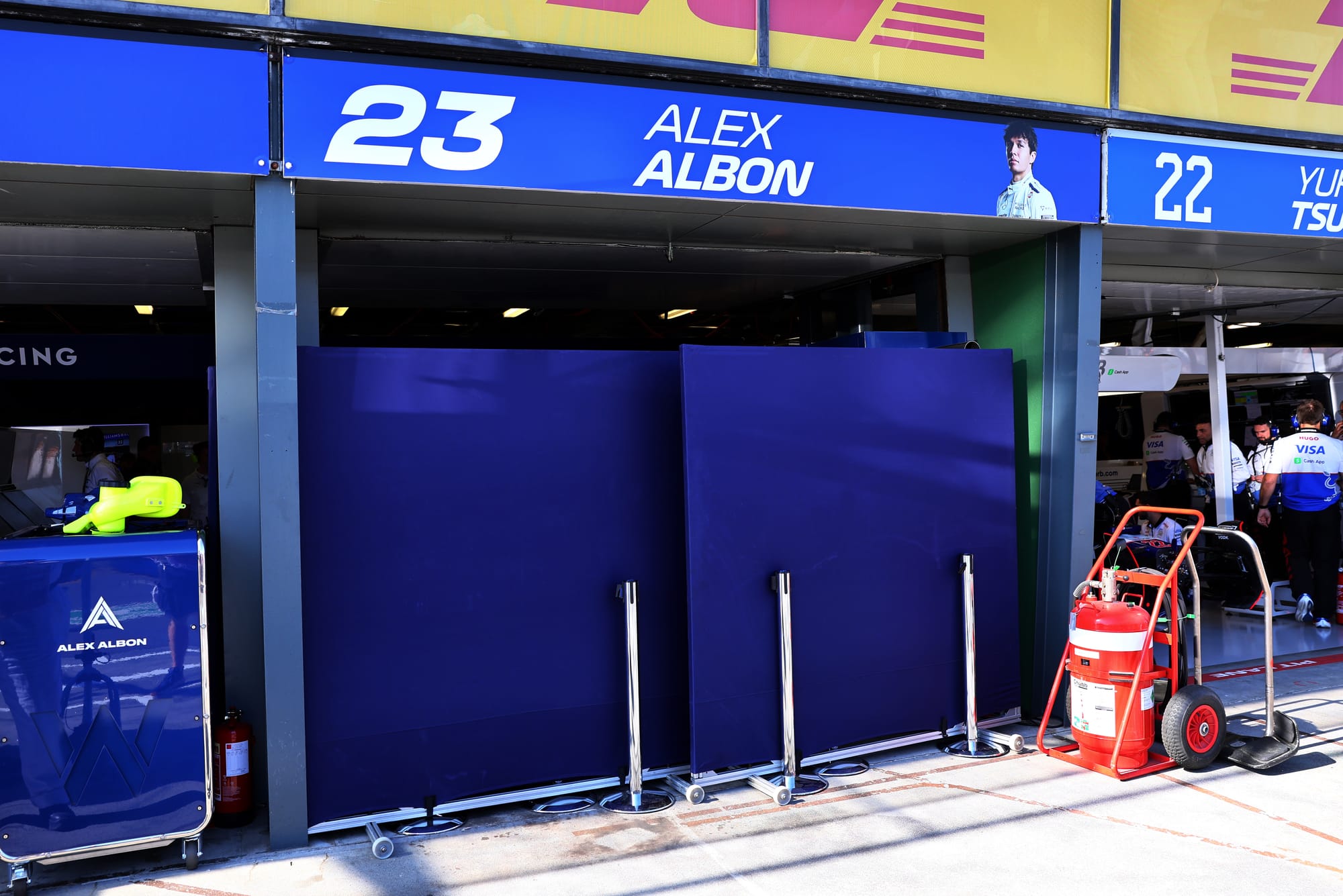
Sauber driver Zhou Guanyu echoed Albon’s position, and also pointed out that the propensity of the current generation of F1 cars to bottom out and the lack of room to adjust to a wider line means that drivers must “take it perfectly or you’re in the barrier”. Piastri confirmed the drivers have discussed this corner with the FIA and that there have now “probably been a few too many crashes with the cars ending up in the middle of the track to not do something about it”.
Russell defended the configuration of the corner itself, arguing that it’s fundamentally a problem of the orientation of the barrier on the outside of Turn 6 rather than a need for an expansive run-off area to be added.
“The corner is amazing, probably one of the best corners on that circuit so I wouldn't want to see that change,” said Russell. “But if you hit that wall, you just bounce back into the track. It’s not just that corner, all circuits that have the barriers in certain positions [and] if it's going to propel you back onto the circuit, that's obviously not good.
“We don't want to have big run-offs, we don't want to have Tarmac run-offs. Everything is correct, just the position of that wall [needs to change]. Even if it's closer to the track but in line with the circuit at least you wouldn't bounce off into the into the racing line.”
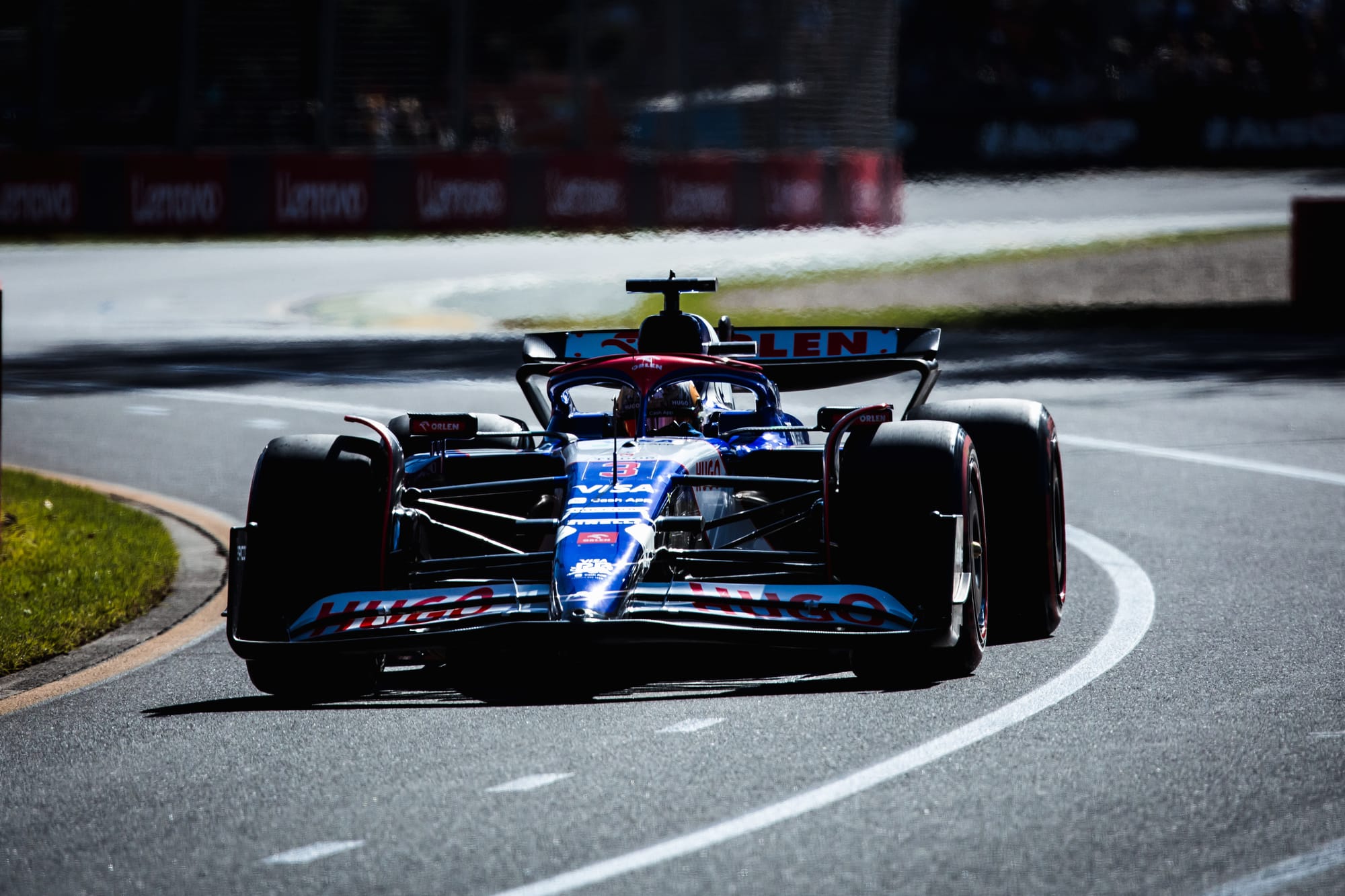
Ricciardo’s position on the corner was similar, describing it as “really, really fun” and “an amazing corner”. He was keen to see changes made to reduce the chances of a car having a big crash and coming to rest on the track, but wanted the “amazing corner” itself to be unchanged given, saying: “If they can make it safer but keep the speed, then that’s my vote.”
Alonso pointed to the safety concern as being "more important" than the manoeuvre.
“The big thing is Turn 6 in Australia is not the safest corner on that track,” he said.
“That’s a more important point to change for next year than what the driver in front of me will be able to do or not do, as long as I don’t need to make an avoiding action or whatever, which was not the case. That was my point after Australia, it still is now. I will move on and I don’t want to speak too much on that.”


